Modern Mobility is a biweekly opinion column. The views expressed are solely the author’s.
With my final Modern Mobility column I’d like to look back at the last few years and look ahead to the next few.

Modern Mobility is a biweekly opinion column. The views expressed are solely the author’s.
With my final Modern Mobility column I’d like to look back at the last few years and look ahead to the next few.

Modern Mobility is a biweekly opinion column. The views expressed are solely the author’s.
Arlington prides itself on its public engagement, but when there is a fundamental disagreement on the basic design of our streets, public engagement becomes a frustrating, repeated rehashing of the same arguments rather than a productive and collaborative conversation about what might make a particular street unique.

I have heard some variation on that sentence more times than I can count at public engagement sessions, County Board hearings and civic association meetings: “Cars just come speeding around that corner.” They shouldn’t be able to.
A street designed for pedestrian safety uses a solid, dependable and simple technique to force cars to slow down, the “corner radius.” Arlington is building streets using corner radii that are much larger than our policies say they should and they don’t seem to be taking into account a key concept: “effective” versus “actual” curb radii. The end result: drivers can whip around a corner at a high rate of speed making them much more likely to kill or severely injure a pedestrian in the crosswalk.
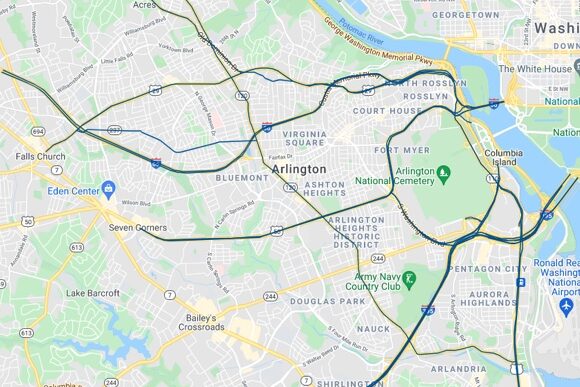
Modern Mobility is a biweekly opinion column. The views expressed are solely the author’s.
Unlike most counties in Virginia, Arlington owns and maintains the vast majority of the County’s roads… but not all of them. Highways like I-395, I-66 rightly belong under the control of the Virginia Department of Transportation, but for other streets in Arlington, the value proposition is much less clear.
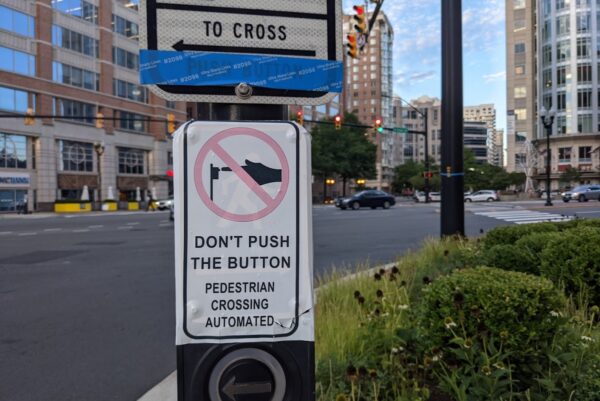
Arlington recently announced the end of one of the only good things to come out of the pandemic: the widespread implementation of automatic pedestrian phases on many of our traffic signals.
In many areas, pedestrians will have to go back to pushing a button in order to trigger an opportunity to safely cross the street. The response from many has been “pushing a button is not a big deal,” and indeed, pushing a button is not hard or onerous; what is a big deal is the guaranteed additional pedestrian delay that comes along with it, the negative effect on accessibility and the message that it sends.
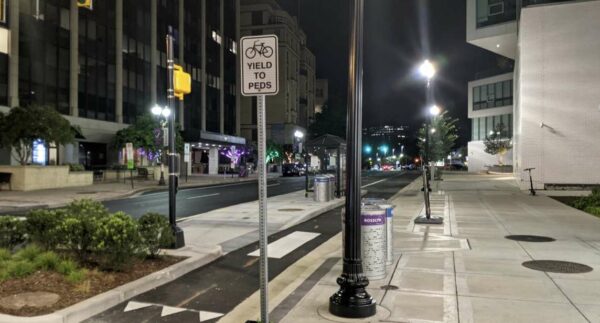
Most of Arlington’s current Protected Bike Lanes have a weak point: bus stops.
While riders have a largely low-stress, comfortable ride separated from moving cars by parked cars, that protection falls away at the bus stop where they need to mix with large vehicles that have somewhat limited rear and side visibility.
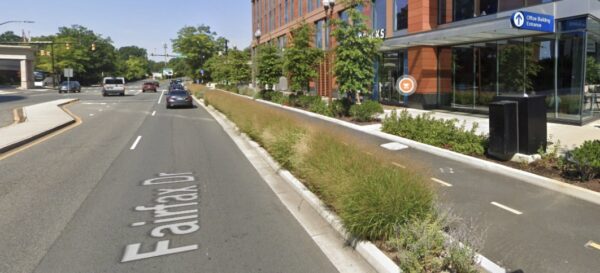
Protected bike lanes on Fairfax Drive are a project whose time has come.
It’s a critical link that would connect commercial areas, parks, and trails to thousands of Arlington residents. It deserves a place in Arlington’s next 10-year Capital Improvement Plan.
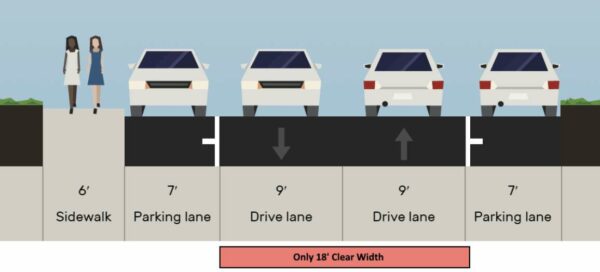
The 20′ Clear Width rule of the VA Fire Code has removed on-street parking that had existed safely for decades, prevented the installation of protected bike lanes and made new sidewalk installations politically infeasible — and you’ve probably never heard of it. This rule can save lives by speeding fire response or cost lives by preventing safer street designs. Is Arlington finding the right balance?
What is the 20′ Clear Width Rule?

May is Bike Month, and from what I’ve seen out and about so far, lots of you are already celebrating.
The pandemic has caused a lot of folks to drag an old bike out of the garage, pick one up from a local bike shop or just ride more frequently, which is fantastic to see. There are some great, free activities this month to help keep you on your riding journey.

Arlington has grown and thrived as a result of transit-oriented development, but is it time for a new TOD in Arlington: trail-oriented development?
In many places, including the DC area, developers are seeing trails as desirable places to be and creating buildings that embrace the trail as an amenity to be cherished, rather than turning their back on the trail as so many existing buildings do.

The County is in the midst of putting together their Capital Improvement Plan (CIP) for the next three years.
This document will determine what projects get built in the near future, from transportation to parks to stormwater infrastructure.